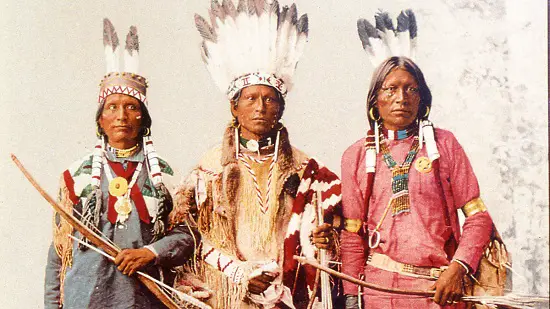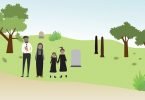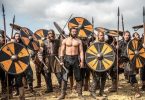| The first people who lived in North America were the Indians. |
| The name “Indians” is actually not very accurate, because the people are not from India. |
| But when the first Europeans came to North America, |
| they mistakenly believed that they had reached India, |
| so they referred to the people as Indians. |
| In different parts of North America, |
| the Indians had very different cultures and very different ways of making a living. |
| On the west coast of North America, many large rivers flow into the Pacific Ocean. |
| In these rivers is an abundance of fish, such as salmon. |
| The Indians in these areas obtained much of their food by fishing. |
| They lived in settled villages, and became experts in carving wood from the tall trees of the area. |
| They carved large canoes for traveling on the rivers and oceans, |
| and they also carved tall “totem poles”. |
| Totem poles were carvings of various animal or human figures, |
| and often the poles had a mythical or spiritual significance for the people who carved them. |
| Many beautiful totem poles can be seen in cities |
| such as Vancouver or Victoria, in the Canadian state of British Columbia; |
| or Seattle, in the American state of Washington. |
| The Plains Indians lived in the central prairie of North America. |
| The various nations of the Plains lived by hunting large animals called buffalo, or bison. |
| Horses were brought to North America in the sixteenth century by the Spanish. |
| The Indians who lived in the prairie areas had learned to become experts at riding horses, |
| and on horseback they could hunt the giant herds of bison. |
| They followed the buffalo from place to place. |
| The Plains Indians lived in portable houses called “teepees”, |
| which were made by sewing together buffalo skins, and holding them in place with wooden poles. |
| In the southwestern United States, some Indians lived by farming. |
| In this dry area, the Indians raised several crops, such as corns, beans, and squash. |
| Many of the Indians in these areas lived in large settlements, |
| where the houses were made from stone or dried mud. |
| The people were experts at weaving, |
| and they made clothing and blankets that had beautiful artistic designs. |
| Near the eastern coast of North America, |
| many Indians lived by a combination of farming and hunting. |
| These people lived in fortified villages, |
| some of which were inhabited for many years at a time. |
| In some places, they built large earthworks that can still be seen today. |
| In the forests of northern Canada, the Indians lived primarily by hunting, fishing, and gathering. |
| Like the Indians of the prairie regions, |
| they often moved from place to place in search of game animals to hunt. |
| Today, the Indians of North America no longer live in their traditional ways. |
| However, several Indian languages are still spoken by many thousands of people. |
| Also, many Indians in the United States and Canada |
| are very interested in maintaining the cultural traditions of their ancestors. |
More English listening lessons for intermediate level:
Lesson 65: The Islands of the Caribbean





